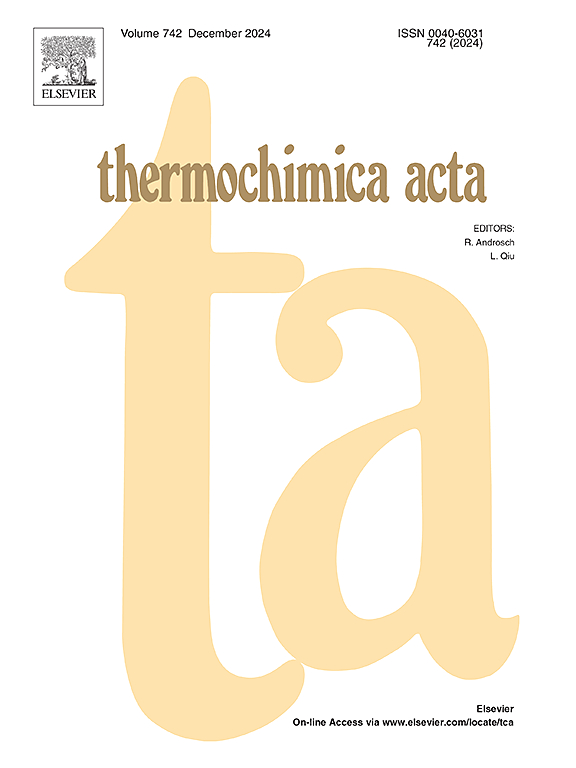Monitoring sunlight-induced dye detoxification in wastewater using TWRC technique
IF 3.1
2区 化学
Q2 CHEMISTRY, ANALYTICAL
引用次数: 0
Abstract
In this work, the photocatalytic activity of synthesized AgTiO2 y Ag2CrO4 nanoparticles (NPs) irradiated by direct sunlight to degrade methylene blue (MB), methyl orange (MO) and Rhodamine 6 G (R6G) organic dyes was evaluated. To study their degradation, optical (UV–vis spectroscopy) and photothermal (thermal wave resonant cavity, TWRC) techniques were used. From the optical results 73.4 % of absorbance were obtained for the AgTiO2 NPs in the UV–vis region and 84.2 % were observed for the Ag2CrO4 NPs in the visible region. TWRC kinetics showed that the thermal diffusivity decreased as sunlight exposure times (from 0 to 80 min) increased. The lowest thermal diffusivity was obtained for MB/Ag2CrO4/H2O with a value of 19.43 ± 0.009 × 10–4 cm2•s-1 for 80 min. From transmission electron microscopy (TEM) particles sizes of 12.97 ± 3.5 and 22.95 ± 6.9 nm were obtained for the AgTiO2 and Ag2CrO4 NPs, respectively. X-ray diffraction (XRD) showed crystalline structure of the NPs. Elemental composition and functional groups were assessed using energy-dispersive X-ray spectroscopy (EDS) and Fourier transform infrared spectroscopy (FTIR), respectively. These NPs as catalysts have proven to be very efficient due to their high photosensitivity, non-toxicity, chemical stability, low cost, easy acquisition and for being environmentally friendly.
利用TWRC技术监测废水中日光诱导的染料脱毒
研究了合成的AgTiO2 y Ag2CrO4纳米粒子(NPs)在阳光直射下降解亚甲基蓝(MB)、甲基橙(MO)和罗丹明6g (R6G)有机染料的光催化活性。为了研究它们的降解,使用了光学(紫外-可见光谱)和光热(热波谐振腔,TWRC)技术。光学结果表明,AgTiO2 NPs在紫外-可见区的吸光度为73.4%,Ag2CrO4 NPs在可见光区的吸光度为84.2%。TWRC动力学表明,随着日照时间(0 ~ 80 min)的增加,热扩散率降低。MB/Ag2CrO4/H2O的热扩散率最低,为19.43±0.009 × 10-4 cm2•s-1,持续时间为80 min。透射电镜(TEM)显示,AgTiO2和Ag2CrO4 NPs的粒径分别为12.97±3.5 nm和22.95±6.9 nm。x射线衍射(XRD)显示了NPs的晶体结构。元素组成和官能团分别采用能量色散x射线光谱(EDS)和傅里叶变换红外光谱(FTIR)进行评估。这些NPs作为催化剂具有光敏性高、无毒、化学稳定性好、成本低、易获取、环保等优点,已被证明是非常高效的催化剂。
本文章由计算机程序翻译,如有差异,请以英文原文为准。
求助全文
约1分钟内获得全文
求助全文
来源期刊

Thermochimica Acta
化学-分析化学
CiteScore
6.50
自引率
8.60%
发文量
210
审稿时长
40 days
期刊介绍:
Thermochimica Acta publishes original research contributions covering all aspects of thermoanalytical and calorimetric methods and their application to experimental chemistry, physics, biology and engineering. The journal aims to span the whole range from fundamental research to practical application.
The journal focuses on the research that advances physical and analytical science of thermal phenomena. Therefore, the manuscripts are expected to provide important insights into the thermal phenomena studied or to propose significant improvements of analytical or computational techniques employed in thermal studies. Manuscripts that report the results of routine thermal measurements are not suitable for publication in Thermochimica Acta.
The journal particularly welcomes papers from newly emerging areas as well as from the traditional strength areas:
- New and improved instrumentation and methods
- Thermal properties and behavior of materials
- Kinetics of thermally stimulated processes
 求助内容:
求助内容: 应助结果提醒方式:
应助结果提醒方式:


